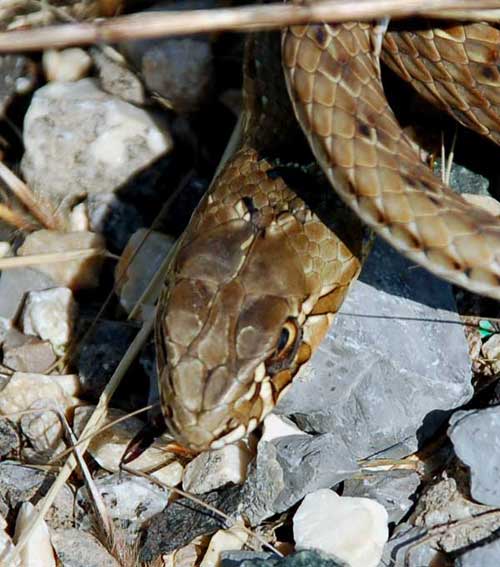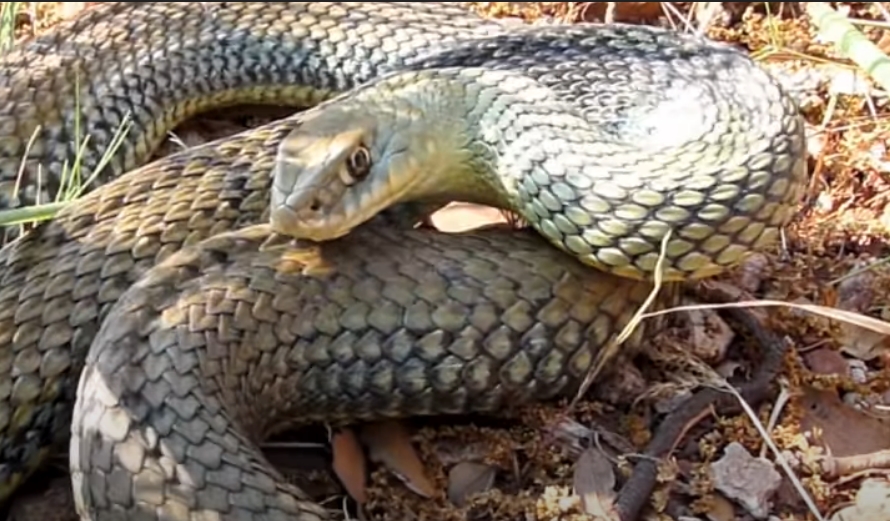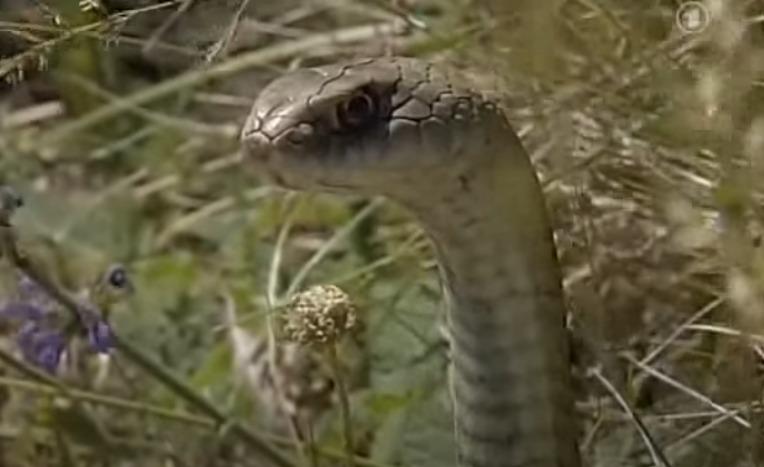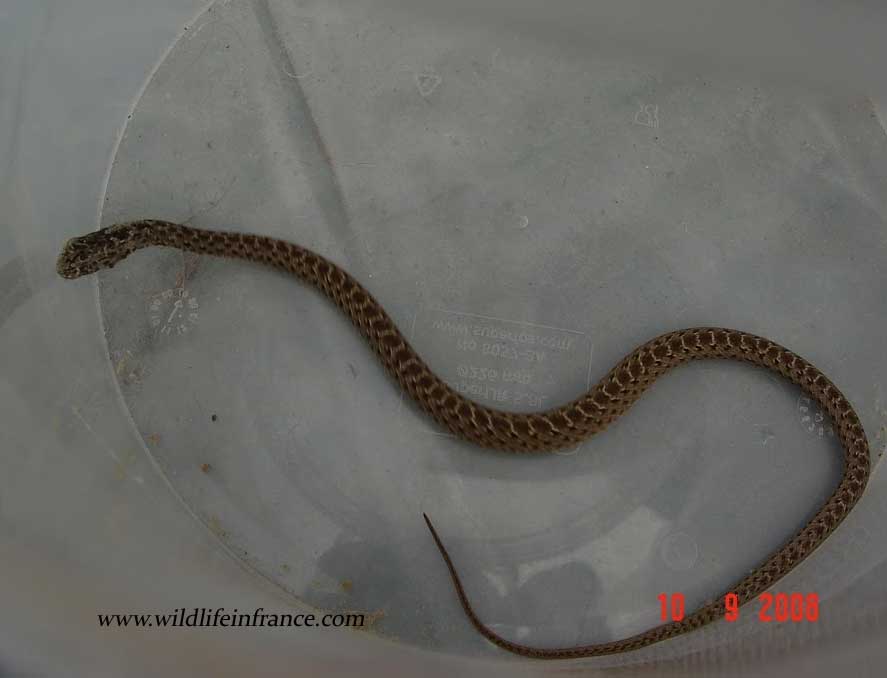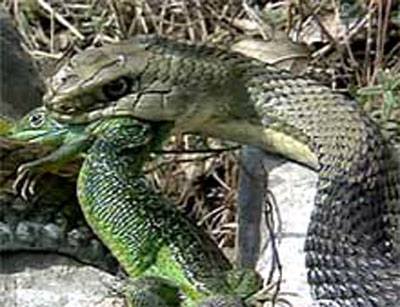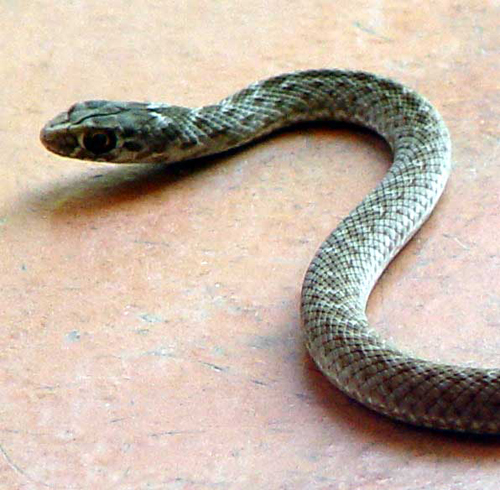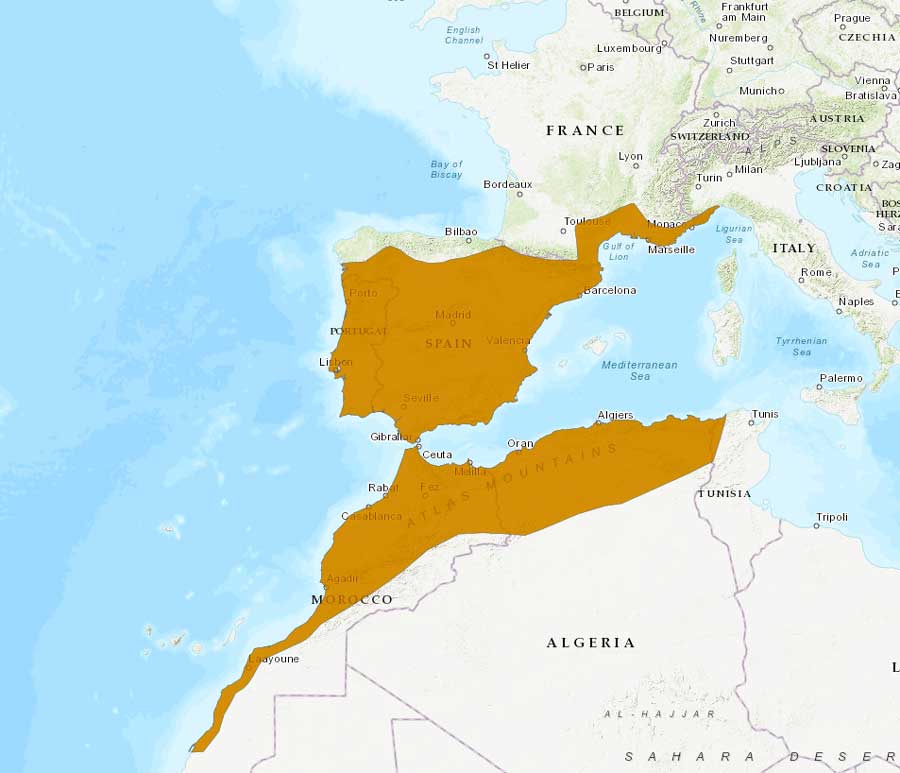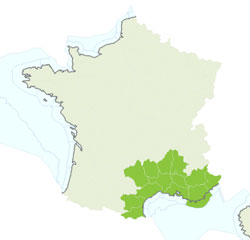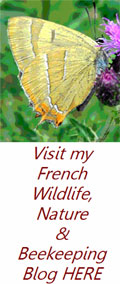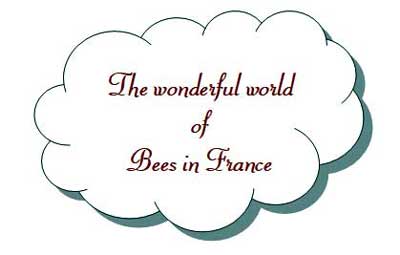Montpellier snake
Malpolon monspessulanus
Couleuvre de Montpellier
The Montpellier snake (Malpolon monspessulanus) is venomous
but being an opisthoglyphous snake they are rarely implicated in human envenomation because the anatomy of its venom apparatus is generally unsuitable for venom delivery to large mammals.
Montpellier snakes can attain a length of more than 2 metres
and have a menacing and ferocious appearance. They have large eyes with round pupils surrounded by clearly visible rims. This snake exhibits significant sexual dimorphism. The females, always smaller and more slender, have a mottled coloration alternating spots of black and white sometimes yellowish on a light brown background of mahogany type or slightly greenish. Males are light or dark olive green with a lateral row black and bluish scales.
They are the only venomous Couleuvre to be found in France
but as its venom fangs are fixed and set at the back of the mouth it is unlikely to cause problems for humans unless they poked their fingers into its mouth . In the unlikely event of being bitten the result would be extremely painful but not dangerous for most individuals. A bite will result in stiffness and swelling where bitten and could produce a state of general lethargy and weakness, this could possibly last a day or two but BE SAFE - GET MEDICAL ATTENTION.
They are only to found in the Mediterranean region of France
where they normally spend their time on the ground in hot arid areas with some shrubby low growth for cover. They can be seen on rocks, stone walls, in vineyards, open woodland or by the side of rivers. Their diet is mostly lizards, but they also eat small mammals up to the size of rabbits, killing by venom. Prey is often chased and followed.
When provoked accidentally they become very aggressive
Coupling is complex and there is bonding between males and females with extensive "foreplay". This commences in April/May and 8 weeks later up to 20 eggs are laid under leaf litter or stones where they take about 50 days to incubate.
Hibernation takes place from October/November until March.
Fabulous video featuring Montpellier Snakes (Malpolon monspessulanus)
filmed in Provence, southern France. Caught on film are some of this snake's unique and interesting social behaviours, such as pair bonding, the male capturing and presenting prey to the female, territorial battling between males, rubbing behaviours using the narial valves and more, as well as exquisitely filmed segments of baby Montpellier Snakes being born.
